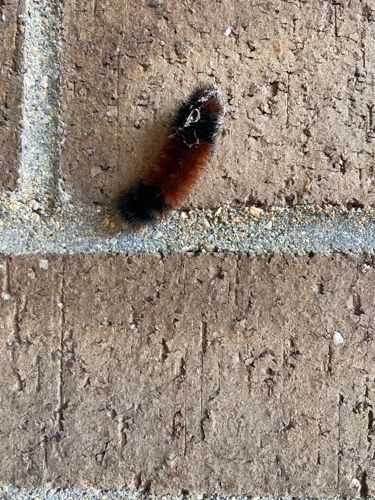Woolly Bear Caterpillar (Banded Woolly Bear)
Scientific Name: Pyrrharctia isabella
Order & Family: Lepidoptera, Erebidae
Size: Larvae (caterpillar) typically range from 1 to 2 inches (2.5 to 5 cm) in length.

Natural Habitat
Gardens, fields, woodlands, and urban areas throughout North America. They are often found on various broadleaf herbaceous plants.
Diet & Feeding
The caterpillars are herbivores, feeding on a wide variety of low-growing herbaceous plants and weeds, including dandelions, plantains, asters, sunflowers, and clovers. They are not typically considered agricultural pests.
Behavior Patterns
Woolly bear caterpillars are known for their distinctive bristly appearance and their habit of curling into a tight ball when disturbed, playing dead. They are active during the day and can often be seen crawling across sidewalks and roads, particularly in the fall, as they search for overwintering sites. They overwinter as caterpillars, often under leaf litter or logs, and then emerge in the spring to pupate and later transform into the Isabella Tiger Moth.
Risks & Benefits
Potential risks: While generally harmless, the bristles (setae) on woolly bear caterpillars can cause mild skin irritation or dermatitis in some sensitive individuals if handled extensively. Potential benefits: They are an interesting and iconic part of local ecosystems, serving as a food source for some birds and small mammals. Their presence is generally a sign of a healthy ecosystem, and they are not considered a pest species.
Identified on: 9/30/2025